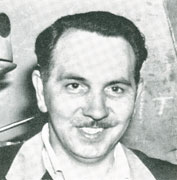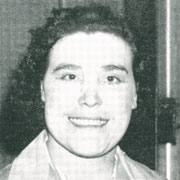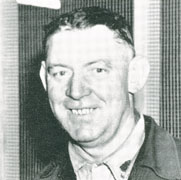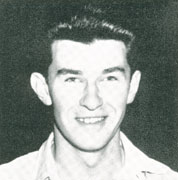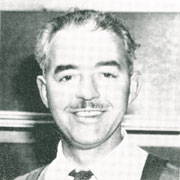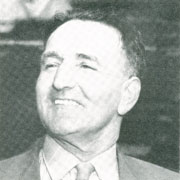|
for about four years, and they did a good job. Unfortunately, one of our old employees had a distressing incident with one of these women employees. This chap, old Charlie Curtis, was convinced the mould store was haunted one night. He could hear voices and strange noises. We nearly had a nervous case on our hands, until someone opened one of the big Hewittic moulds and released one of our women employees. The question of how she got there was never answered, but I believe Charlie opened up the Hewittic moulds every night after that — you can’t beat a little wishful thinking.
During the war, precautions had to be taken against air attacks. Consequently the floor of the Blownware Factory had entrances leading to underground air raid shelters, and there was no better entertainment than an ‘alert’ at 9.0 p.m., a fresh supply from the “Westbury”, and Enoch playing the mouth organ in the shelter.
The Works Cricket team was very prominent during the war, with Jimmie Bowmaker leading his men enthusiastically. This cricket team laid the basis of the present cricket team. Harry Duffell was a regular member of the team, and so was Harold Gill, now one of our Directors. Another stalwart was Peter McClusky. Peter will remember the night that he unwisely turned up for a practise and was putting his pads on behind the wicket keeper. Hughie Middlemas sent down one of his special bumpers, caught Peter on the temple who was knocked clean out. Recovering rapidly, Peter showed he was made of stern stuff by going in to lift Hughie over and out of the field. Unfortunately, Peter lost sight of the next ball, was hit, and was out again. Only a practise, not a hit at the ball, knocked out twice!
The Grange attracted quite a regular attendance from the Blownware Factory, and it wasn’t long before Harry Preston and Billy Kilner, who was shift fitter in the Blownware Factory at this time, were potential Fred Perrys.
Thankfully, the war drew to a close and with it, the cancellation of “The Essential Works Order”. In this short space of about four weeks, twenty-six blowers left the company for other jobs in the South of England. This left us with eighteen blowers. New men had to be trained and trained quickly. About 50% of these blowers did over the succeeding years, apply for re-employment, but nevertheless, the latter part of 1945 and 1946 caused a great deal of embarrassment in trying to cope with orders.
The labour situation was such that it was very difficult to engage new labour. George Rennoldson tells of one man who literally fainted on the spot, when accepted for a job.
Although that was the general story of the labour at that time, we did occasionally hire some good men. One such was Stan Amer, who joined us as a blower. Stan hadn’t been with the Company long, when he was approached by the Personnel Manager at that time, with an offer to coach Stan to put the shot at the annual sports. Stan agreed and turned up at The Grange straight from work, to find the Personnel Manager stripped and in a track suit loosening up. After a lengthy discourse, the Personnel Manager demonstrated to Stan how far you could put the shot using the right technique. He then invited Stan to try his luck, to illustrate the difference the training could make. Stan, from a two footed stance, and without any winding up, outdistanced his tutor by six feet. So ended a promising coaching career.
In 1946, the company arranged a private ‘bus service to bring possible employees from outlying districts. With this bus service about thirty employees per shift were transported. Even this arrangement had its humour, when one new employee from the outlying district was told he would be on a thirteen week cycle, he retorted that he’d only taken the job because there was supposed to be a good bus service, and that he certainly wasn’t going to travel to work on a bike.
With the general demobilisation, Mr. Hope returned to the company, as Managing Director, and at the end of the year, Jimmie Bowmaker left the company to take up an appointment in the South of England.
In 1946, the Updraw tubing machine began to produce pipeline tubing. Up to this time, pipeline lengths were made up from mould cylinders. It was a further nine years before we were able to produce 4” bore pipeline on this machine.
In 1948, the oxycutting machines were transferred to the Blownware Factory to facilitate better line production.
In 1949, the auto presses were transferred to Leopold Street, and this proved to be the swan song of auto-presses in the Blownware Factory.
About this time, No. 2 tank sprang a leak early one Sunday morning. Everyone was informed, including higher management, and the Works fire brigade. Employees love to recall that
Page Fourteen
|

